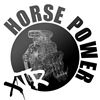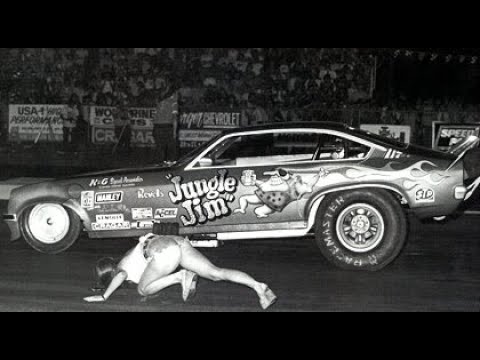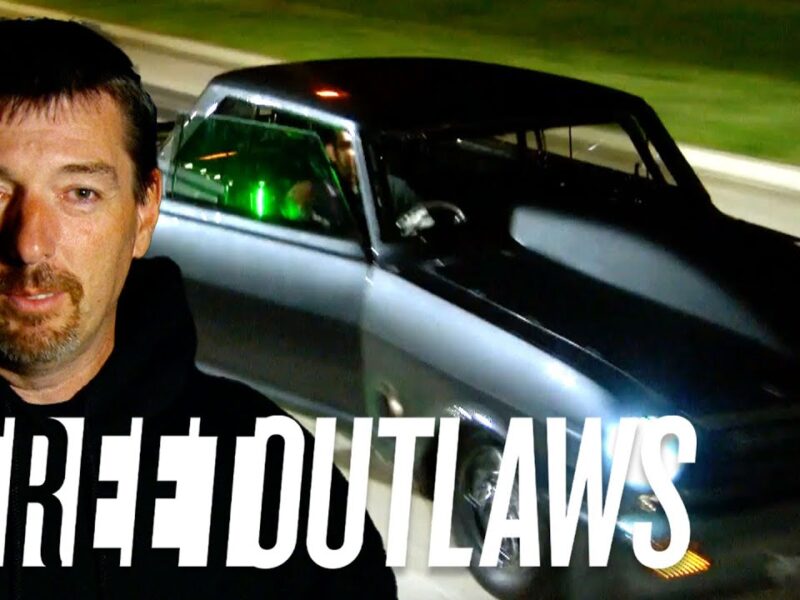Take a look at this, How Drag Racing Saved a This Kid’s Life!
Drag racing gets dismissed all the time as “just loud cars going in a straight line.”
But for one broken teenager standing on the edge of prison, addiction, and total collapse, the drag strip didn’t just offer entertainment. It offered a way out.
This is the story of how a kid with no future found family, purpose, and redemption at a little place called Thunder Valley Dragway—and how one quarter-mile of asphalt rebuilt a life that everyone else had written off.
A Kid Everyone Had Given Up On
By 16, this kid’s life looked like a checklist of bad statistics:
-
Drinking hard and often
-
Fighting constantly
-
Running with the wrong crowd
-
Failing school so badly counselors said he’d never graduate
-
Abandoned by his father at five
-
Watching his mother work two jobs just to keep the lights on
-
Watching his uncle—the only real father figure he had—struggle with health problems
Teachers didn’t see potential. They saw a future inmate.
Family didn’t talk about college. They worried about court dates.
He was angry, lost, and convinced that nothing good was ever going to happen for him.
Then he heard 11,000 horsepower scream down a drag strip.
Thunder Valley Dragway: The First Time He Felt “Home”
His uncle Ray was the one who opened the door. Ray owned a small, rough garage on the edge of town—rust on the walls, tools everywhere, smell of oil and race fuel in the air. To the kid, that garage felt like another planet.
When Ray took him to Thunder Valley Dragway for the first time at seven years old, it didn’t look like much:
-
A short eighth-mile strip
-
Weathered bleachers
-
A timing tower that looked ready to fall over
But when the cars fired, everything changed. The sound wasn’t just noise—it was a physical force that shook his chest and rewired something inside him.
Ray grinned at him and said two words that would define the rest of his life:
“Welcome home, kid.”
He didn’t understand it then. Years later, he would.
Thunder Valley would become more “home” than any house he ever lived in.
Learning the Language of the Drag Strip
Over the years, Ray taught him everything about drag racing:
-
How to read a time slip – reaction time, 60-foot time, E.T., trap speed.
-
Why racing is “chess at 200 mph” – thinking three moves ahead while reacting instantly at the tree.
-
How classes work – from Top Fuel and Funny Car to the heart of grassroots racing: bracket racing, where regular people in everyday cars can compete.
Ray showed him that drag racing was democratic in a way other sports weren’t:
You didn’t have to be tall, fast, or gifted.
You needed heart, discipline, and a car—and if you had enough heart, the rest could be figured out.
But the most powerful lesson wasn’t mechanical. It was human.
When the Engine Blew… and the Family Showed Up
One day during a bracket race, Ray’s engine let go in catastrophic fashion:
-
Broken rods
-
Cracked block
-
Oil everywhere
They didn’t have the money for a new engine. The kid thought this was it—no more racing, no more weekends at Thunder Valley, no more escape.
Then the drag racing community showed him what it really was.
Within an hour:
-
One racer offered a spare engine block.
-
Another had pistons that would fit.
-
A third brought tools and time.
-
Others offered advice, labor, and encouragement.
By the end of the day, they had a plan—and the parts to rebuild.
Two weeks later, the car was back on track.
That was the first time the kid realized:
This isn’t just a sport. It’s a family.
Hitting Bottom – and Finding a Reason to Fight
Life hit harder as he got older.
At 14, Ray suffered a massive heart attack. He survived, but he was never the same. The garage went quiet. The car sat covered. Tools gathered dust.
At home, things got worse:
-
His mom lost one of her jobs
-
Money got tight
-
He fell in with angrier, more destructive friends
He tried to drown everything in alcohol, fights, and chaos. He ran away twice. School basically gave up on him.
For two years, he didn’t go near the drag strip.
He told himself he’d outgrown it.
Truth was, it hurt too much to be reminded of better times.
Then one hungover Saturday, channel surfing on the couch, he landed on an NHRA broadcast from Pomona.
Top Fuel finals.
11,000 horsepower.
Quarter mile in under four seconds.
He watched a veteran driver, Doug Kalitta, make a perfect pass—only to have the engine explode in a violent fireball shortly after.
But what shook him wasn’t the explosion.
It was what happened next.
The Moment That Changed Everything
Instead of folding, Kalitta and his crew went to work.
-
No yelling.
-
No blaming.
-
No quitting.
They tore into the backup car, piece by piece, under insane time pressure—like it was just another challenge to be solved.
They didn’t win the event. But they made it to the next round. They finished.
On that couch, the kid realized:
-
These guys didn’t quit when things blew up.
-
Ray didn’t quit when his engine exploded and the community rebuilt his car.
-
But he had quit—on racing, on school, on himself.
That day, he made a decision:
He was done quitting.
Six Months in the Garage – and a New Life at 17
The next morning he went to Ray’s house and said the only words that mattered:
“Uncle Ray, I want to go racing again. Will you teach me?”
Ray—older, weaker, but still sharp—smiled and said:
“Thought you’d never ask, kid. Let’s get to work.”
What followed were the hardest six months of his life:
-
He rebuilt Ray’s old car from the ground up.
-
He learned to truly wrench, not just watch.
-
He rebuilt the carb, adjusted valves, tuned suspension.
-
Ray coached him not just on how, but why every adjustment mattered.
At the same time, he rebuilt himself:
-
Quit drinking
-
Cut ties with toxic friends
-
Caught up on schoolwork
-
Apologized to his mom and meant it
Every time he wanted to quit, he remembered that backup Top Fuel car being rebuilt in 90 minutes—and he kept going.
By summer, the car was ready.
More importantly, he was ready.
At 17, he got his competition license and rolled into Thunder Valley as a racer, not a spectator.
8 Seconds That Proved He Belonged
His first solo pass down Thunder Valley felt like standing on the edge of a cliff with the whole world holding its breath.
-
Hands shaking at the line
-
Heart pounding
-
Ray watching from the fence, giving a thumbs-up
He staged. The tree dropped: amber… amber… amber… green.
He hit the throttle.
The car leapt forward, tires biting hard, the world blurring.
Eight seconds later, it was over.
The time slip read:
-
Reaction time: 0.523
-
E.T.: 14.67 seconds
-
92 mph trap speed
To anyone else, it was a mid-pack bracket pass.
To him, it was proof:
He could do this.
He belonged here.
He wasn’t beyond saving.
Ray hugged him at the trailer and said the words he’d been waiting years to hear:
“Welcome back, kid. Now let’s make that car faster.”
The Plastic Trophy That Meant Everything
Over the next few years, Thunder Valley became his second home.
He learned from:
-
Big Mike – a Chevelle driver who taught him how to cut good lights and stay mentally locked in.
-
Sarah – a turbo Honda racer who proved it’s not what you drive, it’s how you drive.
-
Pops – an old-school racer from the pre-safety-gear days who taught him respect for speed and danger.
And always, there was Ray in his lawn chair, coaching, guiding, believing.
His first event win came on a small local race. The trophy was cheap plastic on a marble base.
He cried when they handed it to him.
So did Ray.
That little trophy symbolized more than victory. It represented:
-
Staying sober
-
Showing up
-
Doing the work
-
Choosing a better path, one pass at a time
Choosing School… and Getting Saved by the Racing Family
In his senior year, disaster struck again.
The transmission exploded mid-run, taking out the driveshaft and damaging the floor. Fixing it meant serious money he didn’t have.
He had to choose:
-
Spend his savings on the car
-
Or keep that money for college
He chose college. Ray backed him, even though he could see it broke the older man’s heart too. The car went on jack stands.
But the drag racing community wasn’t done with him.
At the last race of the season, he went to Thunder Valley just to say goodbye. That’s when Big Mike handed him an envelope stuffed with cash—money quietly gathered from racers all over the track.
They told him:
“Ray’s helped people here for 30 years. This is just that kindness coming back around.”
He rebuilt the transmission, raced one last time before college, and won the season championship—then split the prize money back among the people who had helped him.
Because that’s what family does.
From Broken Kid to Mentor – and a Full-Circle Moment
College didn’t pull him away from racing; it deepened it.
-
He studied mechanical engineering—inspired by everything Ray had taught him.
-
Worked at an auto parts store.
-
Came back to Thunder Valley whenever he could, running a 2010 Camaro he built himself.
Drag racing became his therapy—those 8–12 seconds where nothing existed but the car, the tree, and the strip.
Ray’s health slowly declined. Eventually he couldn’t make it to the track, so they’d video call after passes, going over time slips like game film.
Then Ray passed away. Thunder Valley filled with racers who came to say goodbye to the man who’d quietly changed their lives.
To honor him, the young man ran the Camaro at Thunder Valley with “In Memory of Ray Thompson – Racing Forever” on the back window. When he pulled back into the pits, there wasn’t a dry eye in sight.
Now in his 40s, he mentors kids like Marcus, a young boy with a rough home life and anger issues—exactly where he once stood.
He lets Marcus wrench on the car, talks him through how everything works, and recently gave him his first ride-along. The look on Marcus’ face during that first launch said everything:
Joy. Hope. Possibility.
The Father Who Left… and the Second Chance at Thunder Valley
One regular Saturday, an old Dodge pickup rolled into Thunder Valley.
The driver stepped out—older, grayer, unsure. It was his father, the man who had walked out when he was five and never looked back.
Anger flared. This was his world. His family. His safe place.
Then he saw the truck bed: helmet, tools, jack stands. His father hadn’t come to invade his space—he’d come to understand it, maybe to reconnect.
He had a choice:
-
Throw him out and stay angry forever
-
Or let the drag strip do what it does best—create neutral ground for rebuilding
He chose to nod toward his pit and say:
“Race starts in an hour. I’m running Super Street. You might want to grab a seat by the starting line.”
They didn’t hug.
He didn’t forgive him—not yet.
But they talked after the race, sitting on a tailgate, beginning the hard, awkward work of truth and apology.
Since then, his father has been back three times. They mostly talk about racing. But under the surface, something is being rebuilt.
Once again, the drag strip wasn’t just about cars. It was about second chances.
Why Drag Racing Really Matters
For this man—and thousands like him—drag racing isn’t just a hobby. It’s a lifeline.
It taught him:
-
Discipline – Every clean pass is built on hours of prep, maintenance, and focus.
-
Resilience – Engines blow, transmissions fail, life falls apart… and you rebuild.
-
Community – People who were strangers become family through busted knuckles and shared late-night thrashes.
-
Presence – In an age of distraction, staging up and focusing on that top bulb is one of the purest forms of meditation you can find.
-
Redemption – No matter how broken the car—or the person—there’s always a way to pull it apart, fix what’s wrong, and try again.
Every weekend at Thunder Valley, he lives those lessons. He races, he mentors, he looks for that kid wandering the pits with wide eyes and no idea how much their life is about to change.
And when he finds them, he knows exactly what to say, the same words that saved him:
“Welcome home, kid. Let’s get you started.”
Because in the end, that’s what drag racing does:
It takes broken lives, broken families, and broken dreams…
and gives them a place to be rebuilt—
one quarter mile at a time.


